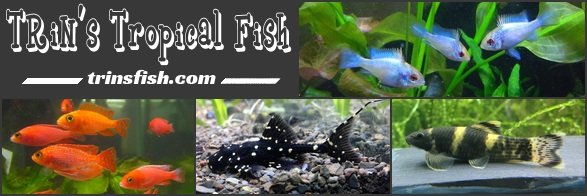Description
Illegal to own in in the following states, no shipping.
Illinois, Michigan, Minnesota and New York.
Albino dojo loach approximately 4-5+ inch in size
In general, Dojo loaches tend to grow slightly smaller in aquariums, reaching a size of 6-8 inches (15-20 cm) in length. However, some individuals may grow larger than this if they are kept in a spacious tank with good water quality and provided with a varied and nutritious diet.
It's important to note that Dojo loaches are social fish and should be kept in groups of at least three individuals. They also require a well-maintained aquarium with plenty of hiding places, such as caves or plants, to feel secure and comfortable. Providing them with a suitable environment and proper care can help them reach their full size potential.
Dojo loaches are a fascinating species of freshwater fish that can be kept alongside koi in both ponds and aquariums. These active and social fish are native to Asia, where they inhabit slow-moving streams and rice paddies. Here is a guide on how to care for dojo loaches in a koi pond or aquarium.
Compatibility with Koi:
Dojo loaches are generally compatible with koi and can be kept in the same pond or aquarium. They are social creatures and thrive in groups, so it is best to keep at least three to five together. However, it is essential to ensure that the size of the tank or pond is large enough to accommodate both species comfortably. Also, koi are known to be aggressive, so larger koi may prey on smaller dojo loaches. It is, therefore, essential to monitor their interactions and provide ample hiding places for the loaches.
Care Guide:
Here are some basic guidelines for caring for dojo loaches in a koi pond or aquarium:
Tank or Pond Size and Water Quality: Dojo loaches are active swimmers and require ample space to move around. A minimum tank size of 20 gallons is recommended for a small group of loaches, while a pond size of at least 500 gallons is suitable for a group of three to five loaches. The water should be well-filtered and maintained at a pH between 7.0 and 8.0, with a water temperature between 68°F and 78°F.
Diet: Dojo loaches are omnivorous and will eat a variety of foods, including algae, insects, and small crustaceans. In a pond or aquarium setting, they will also consume any leftover koi food. It is essential to provide a varied diet to ensure they receive all necessary nutrients. Sinking pellets and flakes are good options, as well as live or frozen foods like bloodworms or brine shrimp.
Hiding Places: Dojo loaches are nocturnal and will spend much of the day hiding in crevices and under rocks. Providing ample hiding places such as rocks, logs, or artificial caves will help them feel secure and reduce stress. Additionally, driftwood or live plants can provide natural hiding spots and improve water quality.
Compatibility with other fish: Dojo loaches are generally peaceful and can coexist with other peaceful species in the aquarium or pond. However, it is important to monitor their interactions with other fish and ensure that no aggression or predation occurs.
Health Concerns: Dojo loaches are hardy fish but may be susceptible to common freshwater fish diseases such as ich, fin rot, and parasites. Regular water testing and maintenance, as well as monitoring fish behavior and appearance, can help prevent and address health issues. Avoid using copper-based medications, as they can be toxic to loaches.
In summary, dojo loaches are a great addition to a koi pond or aquarium, providing both aesthetic and practical benefits. Proper care and attention are necessary to ensure their health and happiness, so always make sure to provide a suitable environment and a varied diet. With proper care, dojo loaches can thrive in a pond or aquarium alongside koi and other freshwater fish.
Dojo loaches, also known as weather loaches or pond loaches, are a popular species of freshwater fish that are relatively easy to breed in the home aquarium. Here is a step-by-step guide on how to breed dojo loaches:
Tank Setup: You will need a breeding tank that is at least 20 gallons in size, with a temperature range of 68-78°F (20-25°C), and a pH range of 6.5-7.5. The tank should have plenty of hiding places, such as rocks, caves, and plants.
Pairing: You will need to pair up your dojo loaches. Place several males and females in the breeding tank and allow them to choose their own partners. Once the pairs have formed, remove any extra fish from the tank.
Conditioning: Before breeding, it's essential to condition your dojo loaches. Feed them high-quality foods, such as live or frozen brine shrimp, bloodworms, or daphnia, to increase their overall health and prepare them for breeding.
Spawning: Dojo loaches are egg-layers, and spawning typically occurs in the early morning hours. You may notice the male chasing the female around the tank, and then they will spawn by releasing eggs and sperm simultaneously.
Egg Care: After spawning, remove the adult fish from the breeding tank, as they may eat the eggs. The eggs will hatch in 4-7 days, and the fry will absorb their yolk sac for nourishment during the first few days.
Fry Care: Once the fry have hatched, you can begin feeding them infusoria or powdered fry food. Keep the water clean and well-aerated. You may also want to add some moss or fine-leaved plants to the tank, which can provide hiding places for the fry and promote their growth.
Growth and Development: As the fry grow, you can gradually increase the size of their food. Keep the water parameters stable, and perform regular water changes to maintain good water quality.
Breeding dojo loaches is a rewarding experience, and with the right setup and care, you can successfully breed and raise these fascinating fish.






